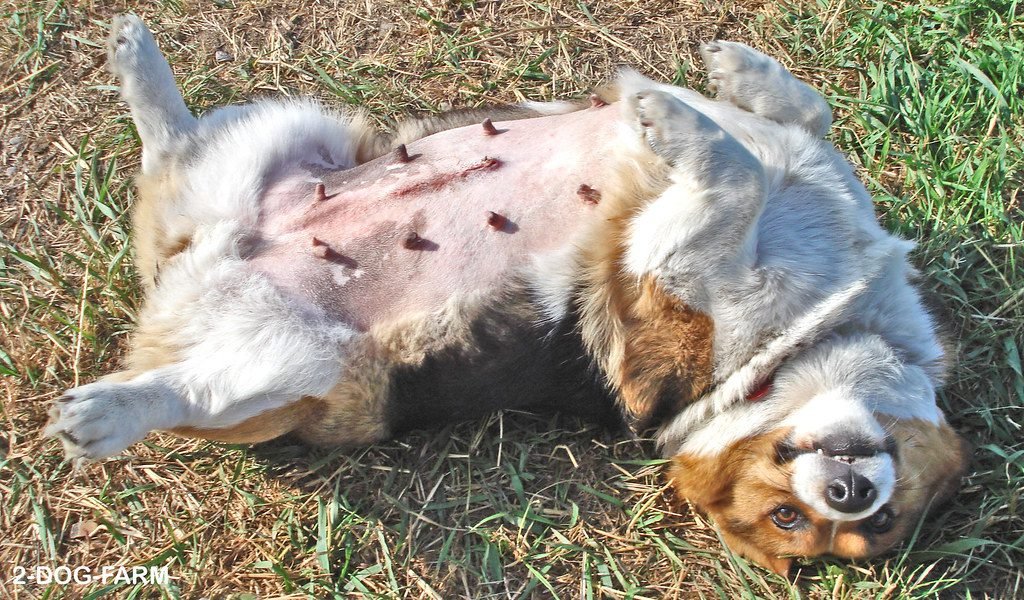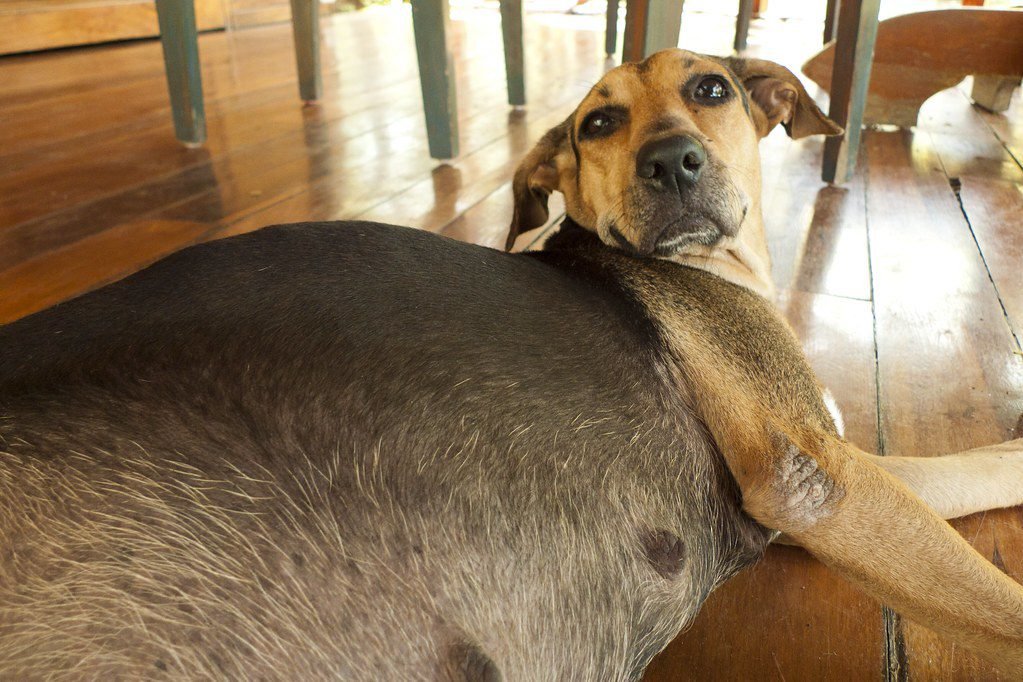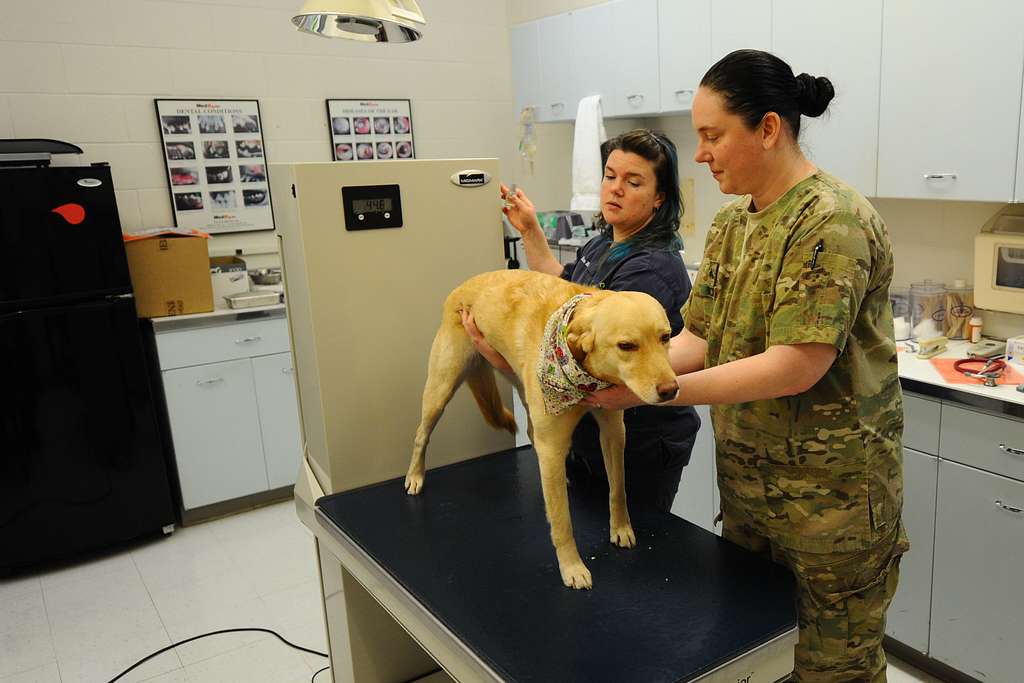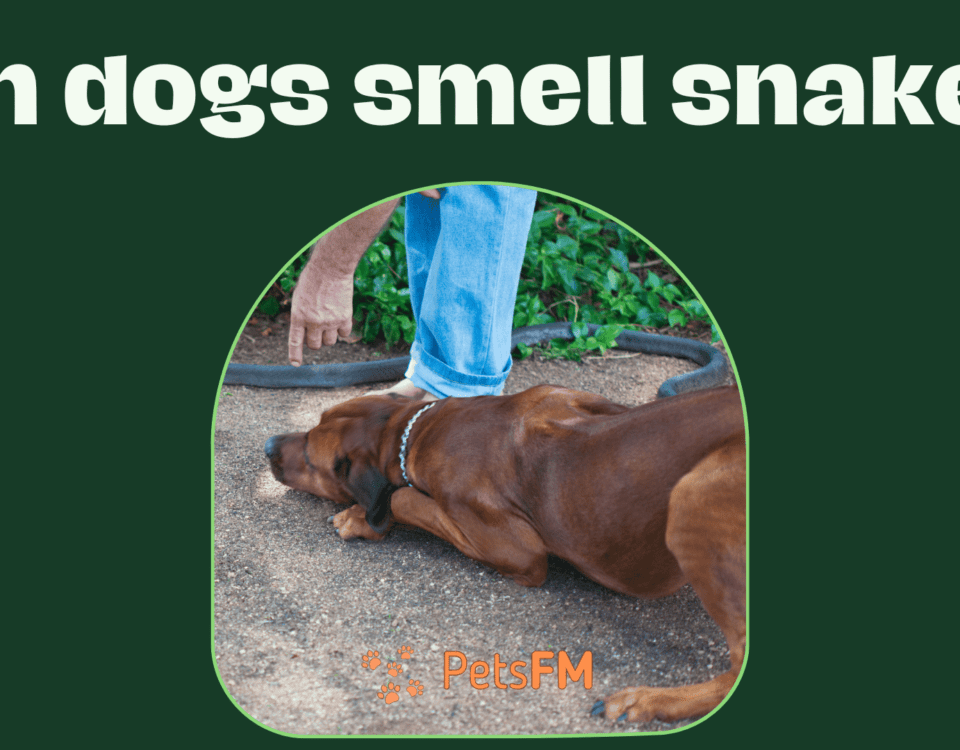


What is black stuff in the cat ear that is not mites? Explained
January 3, 2024


How soon can a dog get pregnant after giving birth? Updated 2024
January 3, 2024Dogs, similar to humans, are mammals and possess the ability to reproduce. Dogs have mammary glands, which are represented by nipples, and these are present but vestigial in male dogs.
These nipples are arranged in a line extending from the groin area to the stomach. The nipple count can differ based on the dog’s breed, age, and specific traits, typically ranging from 6 to 10.
While these nipples are primarily functional for supplying milk to nursing puppies during the lactation period, what could be the reason for the sagging of dog’s nipples?
The sagging of nipples in dogs occurs when the ligaments that support the breast tissue loosen. Female dogs, or bitches, are particularly prone to experiencing saggy nipples due to factors such as pregnancy and lactation, false pregnancy (pseudopregnancy), and advancing age. Additionally, conditions like breast infections, tumors in the mammary glands, and rapid fluctuations in body weight can also lead to sagging breasts in canines.
Sagging nipples in dogs can also happen as a part of their natural aging process and don’t necessarily indicate a need for medical intervention.
Keep reading to understand more about the reasons behind your dog’s saggy breasts and to determine when this condition might be a significant health concern.
Why Are Your Dog’s Nipples Sagging?
Multiple factors contribute to the occurrence of sagging nipples in dogs. Knowing these reasons is essential in deciding whether any intervention is needed and planning appropriate care for your dog.
1: Breast/Mammary Tumor
Mammary tumors, commonly referred to as breast cancer in dogs, are quite prevalent, affecting about 25% of unspayed female dogs, with half of these tumors being malignant. While less common, male dogs can also develop mammary tumors, which tend to be aggressively metastatic.
Symptoms of mammary tumors in dogs include discharges like yellowish or bloody fluid or pus from the nipple, tender or swollen breasts, and the presence of multiple bumps and lumps. Systemic symptoms may include fatigue, weight loss, difficulty breathing, and reduced appetite.


While the effectiveness of sterilization or spaying in reducing subsequent cancer risk is a subject of debate, it can help in mitigating or preventing associated illnesses or infections.
Mastectomy is often the preferred treatment option. Therefore, seeking veterinary advice is crucial if you observe any of these symptoms in your dog.
2: Psuedopregnancy Or Phantom Pregnancy
Phantom pregnancy, also known as pseudopregnancy or pseudocyesis, is a peculiar reproductive phenomenon often seen in unspayed female dogs. It arises due to a significant drop in progesterone levels and a rise in prolactin during the diestrus phase, even in the absence of actual pregnancy.
Affected bitches display behavioral and physical symptoms similar to those of pregnant dogs. These physical changes include the enlargement and swelling of the teats.
This swelling can cause discomfort, leading the dog to frequently lick her nipples. This behavior can irritate the area, increasing the risk of infections.
The sagging of nipples typically resolves within 3-4 weeks after the end of the heat cycle, although this period may vary among dogs. Spaying the female dog is an effective way to prevent this condition.
3: Your Dog Is Pregnant
Pregnancy in female dogs triggers hormonal changes that prepare them for lactating and nurturing their young.
The enlargement and swelling of the nipples start during the heat cycle and persist until the puppies are weaned. Throughout the pregnancy, the nipples grow larger and become more pronounced following the birth as they produce milk for the puppies.


Pregnant Dog
Around the 5-6 week mark of the puppies’ age, the mother dog’s milk production decreases, initiating the weaning process. This period lasts about a week, after which the dog’s teats usually revert to their regular size and shape.
4: Mastitis/Breast Infection
Mastitis, a severe bacterial infection of the mammary glands, can affect both male and female dogs, though it primarily occurs in nursing female dogs (bitches).
This infection typically arises from scratches inflicted by nursing puppies, which create openings for bacteria to enter the mammary glands.
The signs of mastitis include nipples that are lumpy, discolored, or blood-tinged milk, teats that feel warm and are painful to touch, bruising or a purplish-blue coloration of the teats, reluctance or refusal to nurse puppies, growling at puppies, restlessness, and dehydration.
For nursing dogs, the milk from infected nipples can be toxic and pose a danger to the puppies.
Early detection of mastitis is crucial. If you suspect your dog has this condition, it’s vital to consult your veterinarian immediately for a thorough examination.
5: Genetic Condition
Genetics, similar to its role in humans, influences the physical characteristics and changes in dogs, including the appearance of their nipples, such as sagging. Sometimes, this is a normal, benign trait, not a cause for concern.
Genetic variations mean that certain dog breeds are more likely to develop mammary gland tumors. Species with a higher predisposition include Boston Terriers, Brittany Spaniels, Cocker Spaniels, Dachshunds, and English Setters.
6: Old Age
As dogs age, they experience developmental changes and declines, including sagging nipples. This sagging is often due to the loss of skin elasticity and muscle tone that comes with age.


Additionally, in unspayed or unneutered female dogs, continuous heat cycles can contribute to increasingly saggy nipples. Spaying an older dog can help reduce this sagging, although some sagging may remain due to age.
7: Significant or Sudden Changes in Weight
Dramatic changes in a dog’s weight can also impact the appearance of their nipples. Weight gain can cause the skin to stretch and sag, leading to a loss of elasticity and muscle tone around the nipples.
Conversely, weight loss may leave excess skin, resulting in saggy teats.
8: Poor Overall Body Condition
Dogs that are not in good physical shape, whether due to lack of exercise, poor nutrition, or underlying health issues, may exhibit a general loss of muscle tone and skin elasticity, which can extend to the mammary glands.
9: Post-Surgical Effects
In some cases, surgeries in the abdominal or groin areas, such as spaying or other invasive procedures, may inadvertently affect the support structures of the mammary glands, leading to sagging.
10: Environmental Factors and Toxins
Exposure to certain environmental toxins or chemicals can sometimes disrupt hormonal balances or affect tissue elasticity, potentially leading to changes in the mammary glands.


Dog Breeds That Are More Prone to Sagging Nipples
- English Springer Spaniel: Known for their lively nature, these dogs have a higher incidence of mammary tumors, making regular vet checks essential.
- Cocker Spaniel: Prone to various health issues, including mammary tumors, emphasizing the need for early detection and regular veterinary care.
- Boxer: These energetic dogs are at a heightened risk for mammary tumors, especially as they age, necessitating vigilant health monitoring.
- Dachshund: Their elongated body shape doesn’t spare them from mammary health concerns, with a noted predisposition to mammary tumors.
- Poodle (Standard and Miniature): Both varieties of Poodles show a tendency towards mammary issues, making regular health screenings vital.
- German Shepherd: Known for their loyalty and intelligence, German Shepherds also face a risk of mammary tumors, warranting attentive health care.
- Maltese: Small in size but not in risk, Maltese dogs can be prone to mammary gland issues, requiring careful monitoring for any signs of health changes.
- Shih Tzu: These small, affectionate dogs are not exempt from mammary health problems, emphasizing the need for regular veterinary check-ups.
- Yorkshire Terrier: Popular for their size and personality, Yorkies also face a risk of mammary tumors, highlighting the importance of routine health screenings.
- Chihuahua: Despite their small stature, Chihuahuas can be susceptible to mammary issues, underscoring the importance of regular veterinary visits.
Each of these breeds, due to genetic predispositions, requires attentive care and regular veterinary check-ups to monitor and manage any mammary health issues effectively.
Editor’s Pick: 12 reasons why your dog hangs their heads low [+solutions]
How Long Does It Take For A Dog’s Nipples To Return To Normal After Nursing Puppies?
Post-birth, a mother dog’s breasts enlarge and swell to produce milk for her newborn puppies. In the initial weeks, the puppies depend entirely on their mother’s milk for nutrition.
As the puppies grow, they eventually need more nourishment than what the mother’s milk can provide. Around the age of 5-6 weeks, the dam’s milk production decreases, and she starts the weaning process.
By this time, the puppies have developed sharp teeth and claws, making them capable of consuming solid foods, which should be introduced gradually alongside water.
The weaning period typically lasts about a week. On average, the mother dog’s nipples take about 6-10 weeks to return to their normal state after the puppies are fully weaned.
When to Seek Veterinary Care for Your Dog with Saggy Breasts
Saggy breasts in female dogs can be normal, but certain signs may indicate a more serious health problem. Here are some key symptoms that should prompt a visit to the vet:
1: Bloody or Pus-filled Discharge
Discharges of blood or pus often result from infected wounds and are particularly concerning in pregnant or nursing dogs. This condition can lead to contaminated milk, which harms puppies and may cause the mother to refuse to nurse.
2: Lethargy and Loss of Appetite
A noticeable decrease in activity levels or appetite in your female dog is concerning and may indicate an underlying health issue. Dogs are typically energetic and have good appetites, so these changes should not be overlooked.
3: Painful and Warm Teats
If your dog shows signs of pain or discomfort when touching her teats, this could indicate infection, inflammation, or other health issues. This pain can interfere with nursing and may lead to more widespread illness in the dog. Veterinary evaluation is necessary for proper diagnosis and treatment.
4: Redness or Discoloration of the Breasts
Redness in your dog’s breast area often indicates inflammation or infection, commonly seen in mastitis, especially during lactation. The breasts may be red, swollen, and warm.
Discoloration, particularly darkening of the skin or nipple, may indicate more severe conditions like tumors or cancer, sometimes accompanied by visible growths or ulcers.
5: Lumpy or Swollen Teats
Lumps or swelling in or around a dog’s breast could signify a mammary gland tumor, which can be dangerous. Prompt veterinary consultation is crucial for early detection, and treatment is essential for your pet’s recovery.


How to Minimize Nipple Sagging in Dogs
While many common causes of nipple sagging, like aging, are inevitable, there are steps you can take to manage and possibly reduce this condition in dogs.
1: Balanced Nutrition
A nutritious diet is key to maintaining a dog’s physical health, especially after pregnancy. Adjust the calorie intake based on whether your dog has gained or lost weight during breastfeeding.
For overweight dogs, reduce calorie intake, while underweight dogs may need more frequent meals with higher calorie content. Adding multivitamins can provide additional nutritional support.
2: Regular Exercise
Physical activity can help tone a dog’s body post-pregnancy. Exercise strengthens the muscles around the breasts, which can help tighten sagging nipples. It also aids in weight management.


Playing with Dog – Exercise
Start with short walks 48 hours after delivery, gradually increasing the intensity and duration of exercise after weaning.
3: Consider Collagen Supplements
Collagen, a structural protein in certain foods and supplements, supports tissue repair and immune responses.
Supplementing with collagen may help improve your dog’s skin and joint health, potentially tightening loose skin around the breasts and nipples to reduce sagging.
4: Healthy Weight Management
Maintaining a healthy weight through diet and exercise is crucial. Excessive weight gain can stretch the skin and cause sagging breasts, while significant weight loss might leave excess skin that sags.
Work with your vet to create a balanced nutritional plan and exercise regimen tailored to your dog’s age, breed, and activity level.
5: Allow Recovery Time
The physical demands of pregnancy and nursing, including nipple enlargement and sagging, are natural and take time to reverse. Allowing your dog sufficient time to recover is essential.
During this period, her body will gradually return to its pre-pregnancy state, with hormone levels normalizing and the mammary glands and vulva shrinking back.
Real Next: My dog lowers his head and stares: Canine behavior explained
Wrapping Up
Much like humans, dogs are mammals with mammary glands for milk production. The sensitive nature of this tissue means that sagging can occur naturally or due to various other factors.
Hormonal shifts during pregnancy and lactation, as well as the dog’s age, can lead to the sagging of mammary glands.
Additional causes of sagging nipples in dogs can include but are not limited to, infections, inflammatory responses, mammary tumors, hormonal changes during pseudopregnancy, and changes in skin elasticity due to being overweight or underweight.
While sagging nipples can be a normal part of a dog’s physiological process, certain circumstances may necessitate veterinary intervention to address underlying causes.



